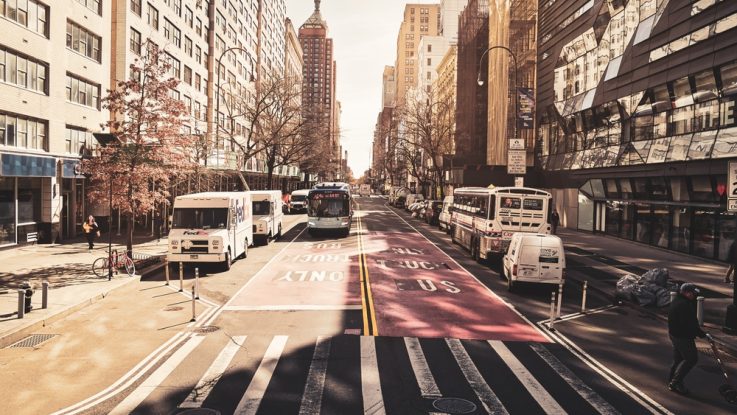
New York City’s Metropolitan Transportation Authority (MTA) recently announced the expansion of its Automated Bus Lane Enforcement (ABLE) program that is currently being used to prevent double parking and other violations in bus lanes in the city.
The ABLE program uses cameras to capture drivers violating bus lane rules in real-time, with the aim of deterring motorists from blocking these lanes to improve bus service and reduce crashes. The new Automated Camera Enforcement (ACE) program expands on this, capturing vehicles violating double parking and bus stop/lane rules in real-time, with cameras fitted on buses across 14 routes.
The captured data on license plates, locations and time stamp information is transmitted to the New York City Department of Transportation (NYCDOT) for review and processing. Violations result in a warning letter for the first 60 days of operations after which they will be fined, with penalties ranging from US$50-$250.
“It’s pretty hot out here but for the people blocking our bus lanes, it’s about to get hotter,” said New York City Transit Senior Vice President of Buses Frank Annicaro. “Automated camera enforcement – which expands our enforcement authority from bus lanes to include bus stops and double-parking violations – is a real game changer.”
MTA studies have shown that when enforcement cameras are activated, bus lane speeds increase by an average of 5%, along with a 20% reduction in collisions and a 5-10% reduction in emissions. Preventing vehicles from parking in bus stops helps ensure buses can pull to the curb, allowing all customers to safely exit and board the bus – including those using wheelchairs or mobility devices, and those pushing strollers or carts.
“Millions of New Yorkers rely on our buses every day, and they deserve to ride in bus lanes that are safe and efficient,” Governor Hochul said. “The continued expansion of ABLE will both protect riders and enable faster, more reliable service for New Yorkers to enjoy.”